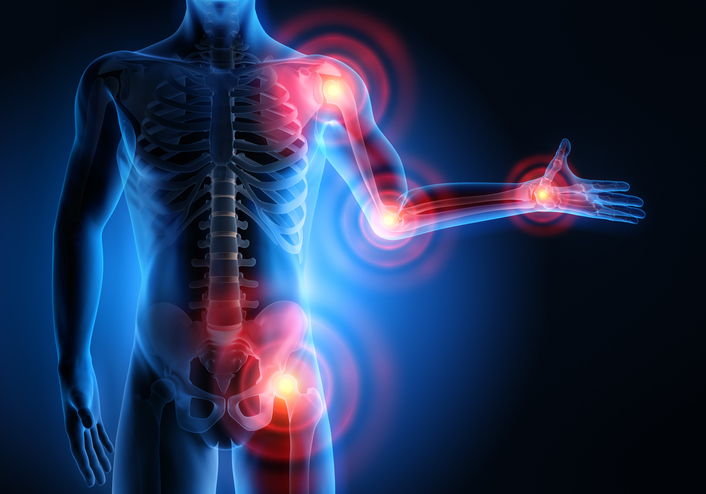
You are more likely to experience joint discomfort in your shoulders, hips, and knees. Still, regardless of the affected part, joint pain can limit your mobility and interfere with your daily activities. Hazlet joint pain can sometimes be due to a mild sprain that resolves with painkillers or severe medical conditions like arthritis that require lifelong management. Factors that can trigger joint pain include:
- Arthritis
Arthritis is a chronic condition that causes joint pain and inflammation. The most prevalent form of arthritis is osteoarthritis, which occurs when the protective cartilage that covers the ends of your bones wears down over time. This results in the bones rubbing against each other, causing pain, stiffness, and swelling in the affected joint. In addition to joint pain, arthritis can cause fatigue, fever, and malaise.
Arthritis can affect any joint, but it mostly affects the knees, hips, hands, and spine. The pain associated with arthritis can be debilitating, making it difficult to perform everyday activities such as walking, climbing stairs, or even getting dressed. Over time, the disorder can lead to permanent joint damage, which can further limit mobility and cause chronic pain.
- Tendinitis
Tendinitis is a disorder where your tendons, the connective tissues that attach muscles to bones, become inflamed and irritated. When overused or injured, tendons can become swollen and cause joint pain. The most prevalent symptom of tendinitis is pain and stiffness around the affected joint.
Tendons are responsible for transferring the force generated by the muscle to the bone, and when inflamed, the force is not transmitted effectively. This can cause the muscles to work harder, leading to more pain and discomfort. Furthermore, if tendonitis is left untreated, it can lead to a more serious injury, such as a tear or rupture of the tendon, which can cause even more severe joint pain.
- Osteoporosis
Osteoporosis is a medical condition that weakens your bones, making them fragile and prone to fractures. As the bone density decreases, your joints become unstable and are unable to support your body’s weight, causing pain and discomfort. The loss of bone mass also affects your joints’ ability to absorb shock and reduces the cartilage’s ability to provide cushioning between the bones, leading to increased friction and wear and tear on the joints. As a result, osteoporosis can cause joint pain, stiffness, and swelling, limiting the range of motion and affecting your overall quality of life.
- Sprains and strains
Sprains and strains are two types of injuries that can cause joint pain. A sprain occurs when a ligament is torn, while a strain occurs when a muscle or tendon is stretched or torn. These injuries often happen due to sudden or excessive movement or overuse of your joints. When a ligament or tendon is injured, it can result in inflammation, swelling, and pain in the affected area. These injuries can lead to stiffness and limited mobility, making it difficult to move the joint properly. Over time, if left untreated, the joint pain can become chronic and may require medical intervention to help alleviate the pain and restore proper joint function.
Call the Garden State Pain & Orthopedics office for comprehensive care or schedule an appointment online.

